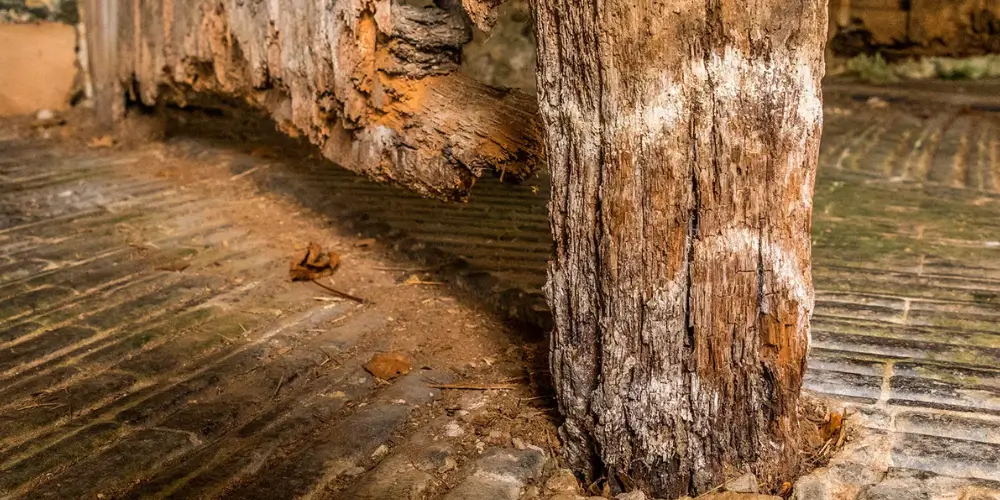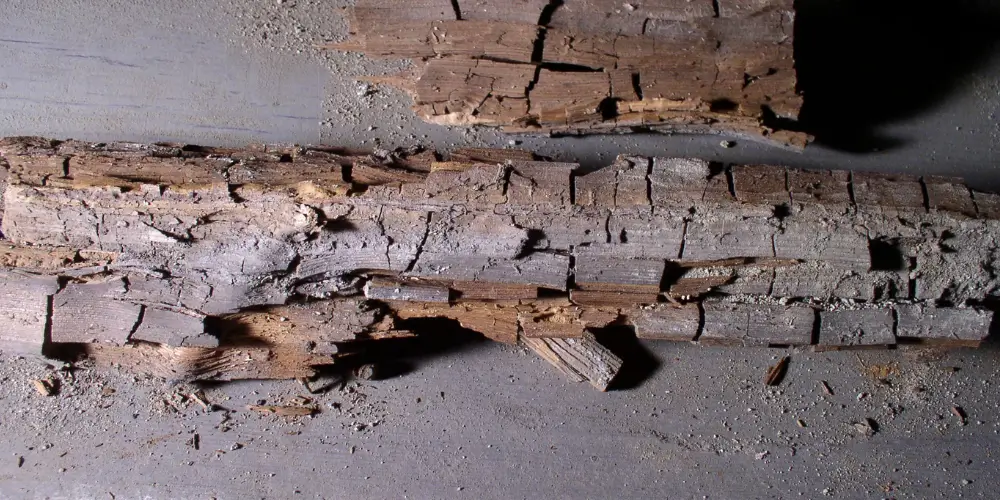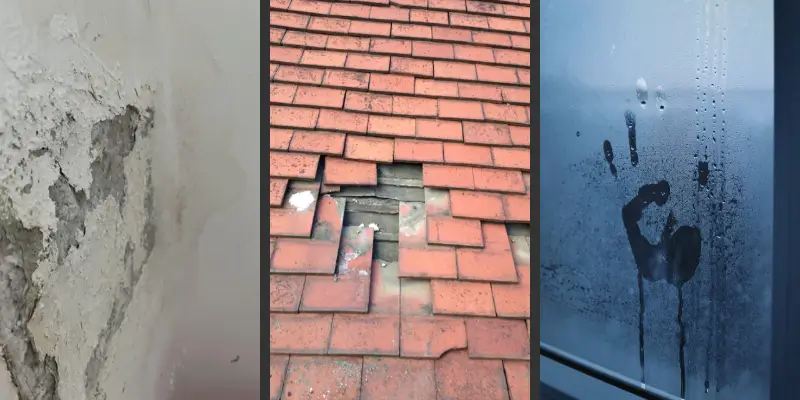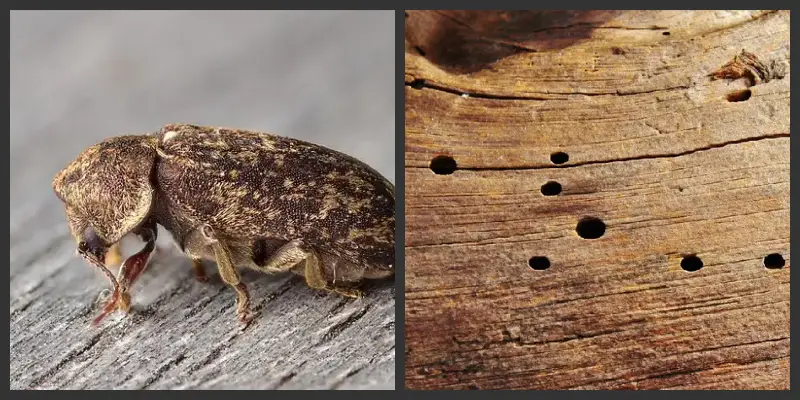Wet Rot is a localised problem which can attack wood exposed to moisture. If untreated, it may cause a loss of strength to timbers which may collapse, posing a risk to safety. This article will help you identify wet rot, and to prevent and treat it effectively.
What is Wet Rot?
Wet Rot is a type of fungal decay that occurs in timber exposed to excessive moisture. The fungus thrives in damp environments, breaking down the wood’s structure and causing it to weaken over time. Unlike Dry Rot, Wet Rot typically remains confined to the areas where moisture is present.
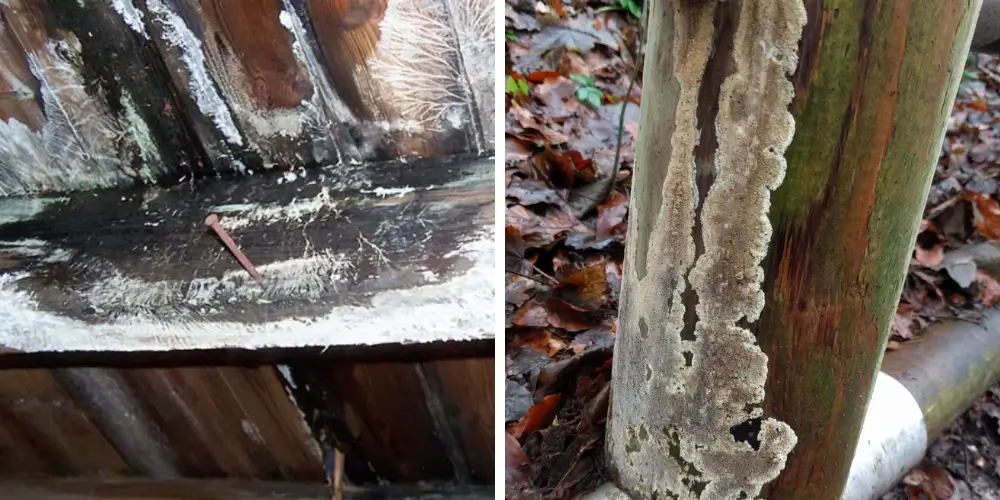
The Types of Wet Rot
Wet Rot can be caused by any of a vast number of strains of fungi Coniophora puteana (cellar fungus) being the most common, with Fibroporia vaillantii and Phellinus contiguous being among the other more common strains. Wet Rot falls into two categories, either White Rot or Brown Rot. These terms are used to describe the look and type of decay caused by the Wet Rot fungi.
Whilst we could go further into the specifics of these rot types, there are literally thousands of types of Wet Rot and the treatment is the same for all types, the important thing is to identify if you are dealing with Wet Rot or Dry Rot.
The Importance of dealing with wet rot?
Wet Rot can affect the load bearing strength of timber, leading to:
- Weakening of floorboards, joists and structural beams.
- Collapse of areas of flooring, structural timber elements.
- Risk of further associated problems.
If the main cause of the Wet Rot (water or moisture ingress) is left untreated, Wet Rot can spread, it can also be a risk of developing Dry Rot where the damp timber starts to dry into the required moisture levels as it progresses along the beams.
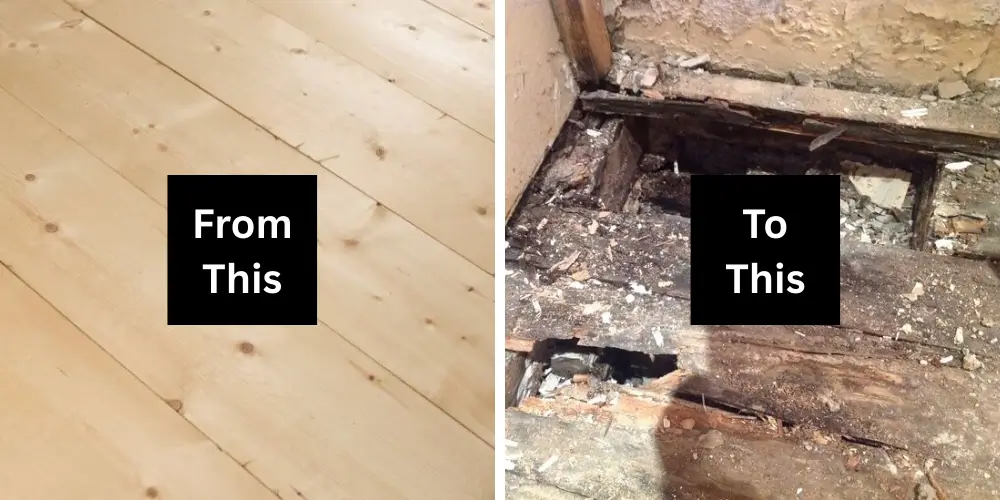
What Causes Wet Rot?
The main causes of Wet Rot are:
- Leaks from roofs, or defective rainwater apparatus such as gutters and downcomers.
- Lack of ventilation in areas such as roof voids or sub floor voids.
- Timber in contact with damp masonry due to inadequate damp-proofing, penetrating or bridging damp.
- Areas of high humidity due to a lack of ventilation or insulation.
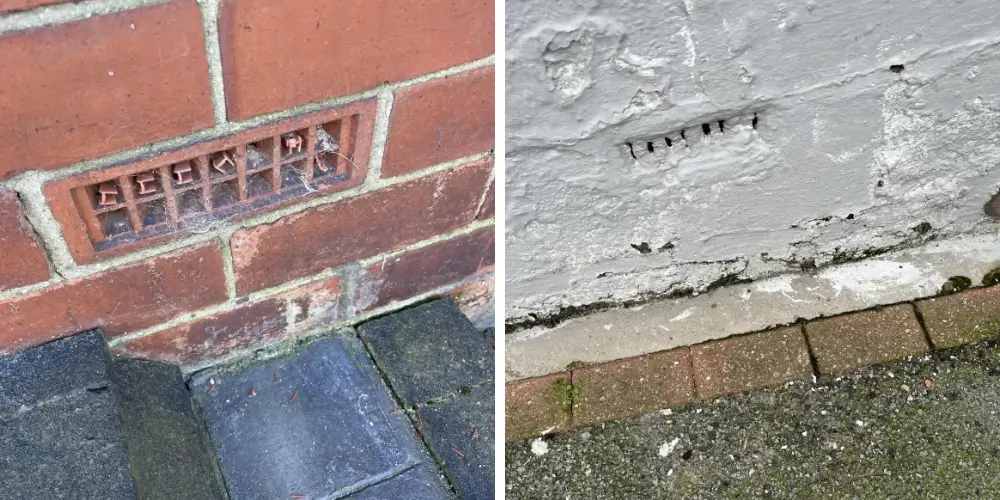
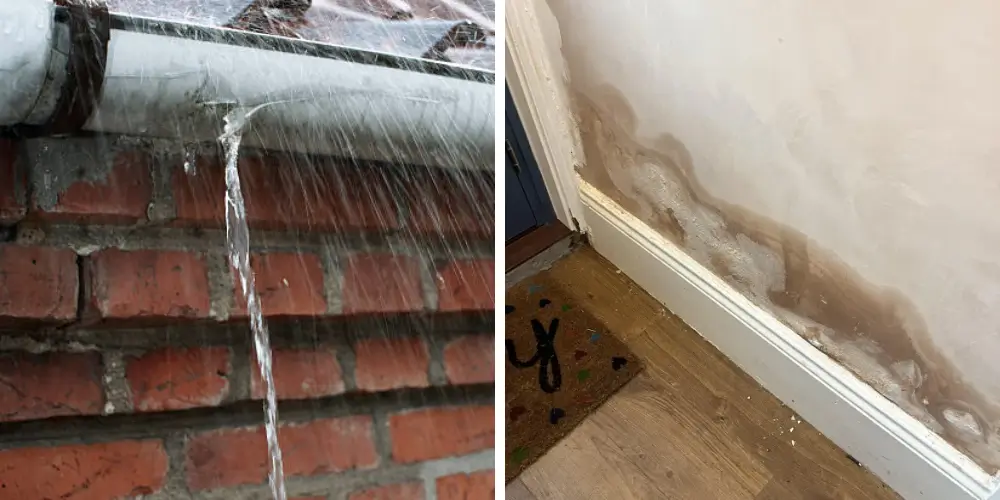
What Are the Signs of Wet Rot?
Detecting Wet Rot early is crucial and can save you significant time and money. Look out for these tell-tale signs:
- Unusual movement/springiness of floors.
- A damp or unusual smell.
- Discoloration, shrinking, or cracking of timber.
- Presence of certain types of fungal growth (careful not to confuse with Dry Rot).
- Changes to painted timbers such as skirtings and backmoulds.
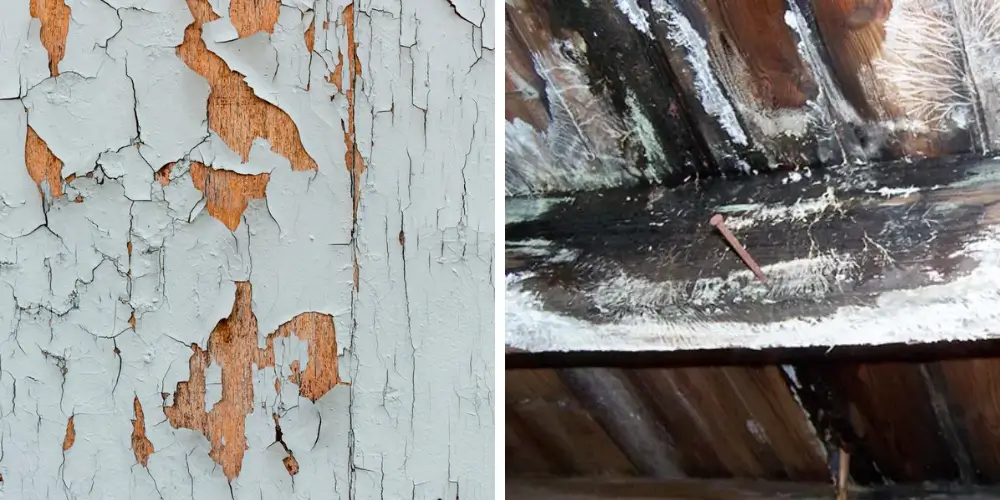
How to Prevent Wet Rot
Prevention is always better than cure. Here are some practical steps to protect your property from Wet Rot:
- Maintain Proper Ventilation: Ensure good airflow in sub floor areas, lofts, voids. Ensure you have enough airbricks installed. Timbers should always be kept below 20% w/w (water weight) to avoid rot. This can be easily checked with an inexpensive moisture meter.
- Control Moisture: Fix penetrating damp issues such as leaks and faulty guttering promptly and address any rising damp issues as soon as they arise. Note: wood rot is often found adjacent to damp walls within a property.
- Treatment of Timber: Always use treated timber for building work and for repair work, replace any rotten timbers with pre-treated wood to resist fungal decay. Be sure to also apply treatment to any cut areas or ends of timber. Available timber treatments include Microtech, Wykabor 10.1, Wykabor 20.1 and Wykabor 40.1.
- Wrap joist ends: to prevent timber coming into contact with damp masonry wrap the joist ends with DPC.
- Regular Inspections and Maintenance: Check and maintain your property especially areas such as rainwater apparatus gutters, downpipes, and roofing to avoid water ingress.
- Improve Drainage: Ensure water is directed away from your property’s foundation and is not ponding on the sub floor surface beneath your floorboards.
- Protect Timber from the elements: Apply protective coatings or sealants to external wooden surfaces.

How to Treat Wet Rot
If you’ve identified Wet Rot in your property, follow these steps to eradicate it:
- Identify and Eliminate Moisture Sources: Fix any leaks, improve ventilation, and reduce humidity.
- Assess the Extent of the Damage: Inspect the affected wood to determine whether it can be repaired or needs replacement.
- Remove Damaged Timber: Carefully remove all decayed wood to prevent the fungus from spreading.
- Treat Surrounding Areas: Apply a fungicidal treatment to adjacent wood and masonry to kill any remaining spores. Available timber treatments include Microtech, Wykabor 10.1, Wykabor 20.1 and Wykabor 40.1.
- Replace or Repair Timber: Use treated or rot-resistant wood to repair or replace damaged sections.
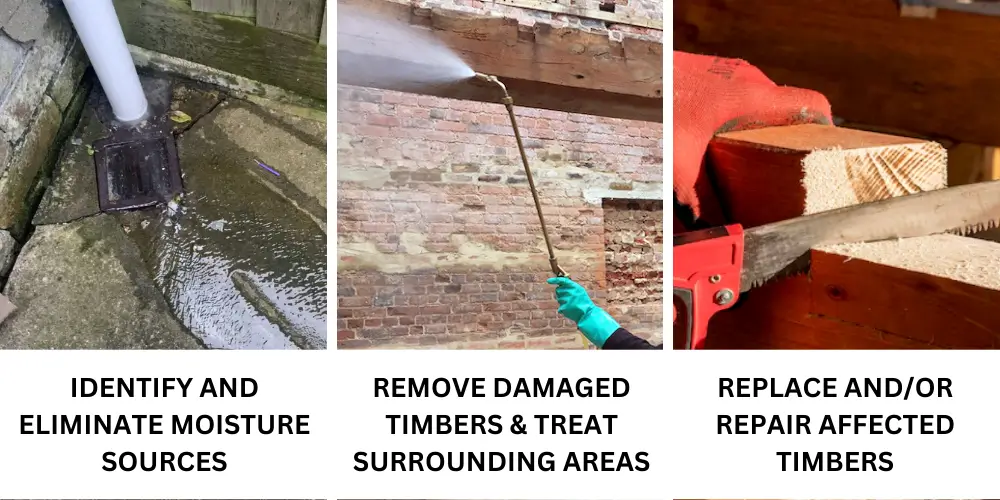
For severe cases, you may want to consult a professional to ensure the problem is fully resolved.
By understanding the causes, signs, and treatments of Wet Rot, you can protect your home from this common issue. Regular maintenance and prompt action will not only save you money in the long run but also ensure the safety and longevity of your property.
Tools & accessories you may need to carry out Wet Rot Treatment and Timber Replacement:
- Moisture Meter
- Saw
- Tape measure
- Pencil
- Hammer
- Pry Bar
- Brush
- Pressure sprayer
- Staple gun
- Utility knife
- Floor protection
- Rubble bags
Materials you may need for treatment of Wet Rot
- Microtech DP Preventative Spray: for surrounding areas (also prevents Woodworm attack).
- Wykabor 10.1: preventative preservative for fungal decay in sound timbers following the removal of moisture. Specially designed for application to large areas of timber.
- Wykabor 20.1: brush on gel for treatment of joist ends/cut timbers.
- Wykabor 40.1 Paste: for injection of ‘at risk’ timbers.
- Damp Proof Wrap: for protecting joist ends and timbers from contact with damp earth/masonry.
- Airbricks: to increase ventilation to sub floor voids.
- Antinox Heavy Duty Floor Protection: for carpets and floors, useful for foot traffic areas between work area and external doors.
We Answer Some of the Most Asked Questions on Google Regarding Wet Rot
What’s the Difference Between Wet Rot and Dry Rot?
Wet Rot occurs in wood that is consistently damp, whereas Dry Rot can spread even in drier conditions by transporting moisture from one area to another. Dry Rot is typically more aggressive and damaging.
Is Wet Rot the Same as Woodworm?
No, Wet Rot is caused by fungi breaking down wood, while woodworm refers to damage caused by the larvae of wood-boring beetles. Read Our How To Treat Woodworm Article.
What is the Main Cause of Wet Rot?
The main cause of Wet Rot is prolonged exposure of timber to excessive moisture, often from leaks, rising damp, or poor ventilation.
Is Wet Rot Worse Than Dry Rot?
Both are damaging, but Dry Rot is generally considered worse due to its ability to spread more aggressively.
How Do I Get Rid of Wet Rot?
Eliminate the source of moisture, remove damaged wood, treat with fungicide, and repair or replace affected areas.
Can I Fix Wet Rot Myself (DIY)?
Yes, minor cases can often be fixed with DIY methods, but severe cases may require professional intervention to ensure thorough treatment.
What Happens if Wet Rot is Left Untreated?
Untreated Wet Rot can compromise the structural integrity of timber, leading to potential safety hazards and costly repairs.
What Does Wet Rot Look Like?
Wet Rot often appears as soft, spongy, or crumbling wood with discoloration, cracking, or fungal growth.
Can You Stop Wet Rot Once It Starts?
Yes, by addressing the moisture source and treating the affected area promptly, you can stop Wet Rot from progressing.
Can Wet Rot Spread From House to House?
No, Wet Rot is confined to areas with consistent moisture. It does not spread like Dry Rot.
How Long Does It Take for Wet Rot to Destroy Wood?
The timeline depends on the moisture level, temperature and type of wood but can range from months to years if left untreated.
Is Wet Rot Dangerous and Hazardous to Your Health?
Wet Rot itself is not directly hazardous to health, but the conditions that promote it, such as damp and poor ventilation, can encourage black mould growth, which may cause respiratory issues or allergies for some individuals. Addressing Wet Rot promptly can help maintain a healthier living environment.
Does Wet Rot Have a Smell?
Yes, Wet Rot often has a distinctive musty or damp odour, caused by the fungal activity and decaying wood.
Where is Wet Rot Commonly Found?
Wet Rot is commonly found in areas exposed to persistent moisture, such as basements, bathrooms, kitchens, poorly ventilated crawl spaces, and around leaking roofs, pipes, or gutters.
